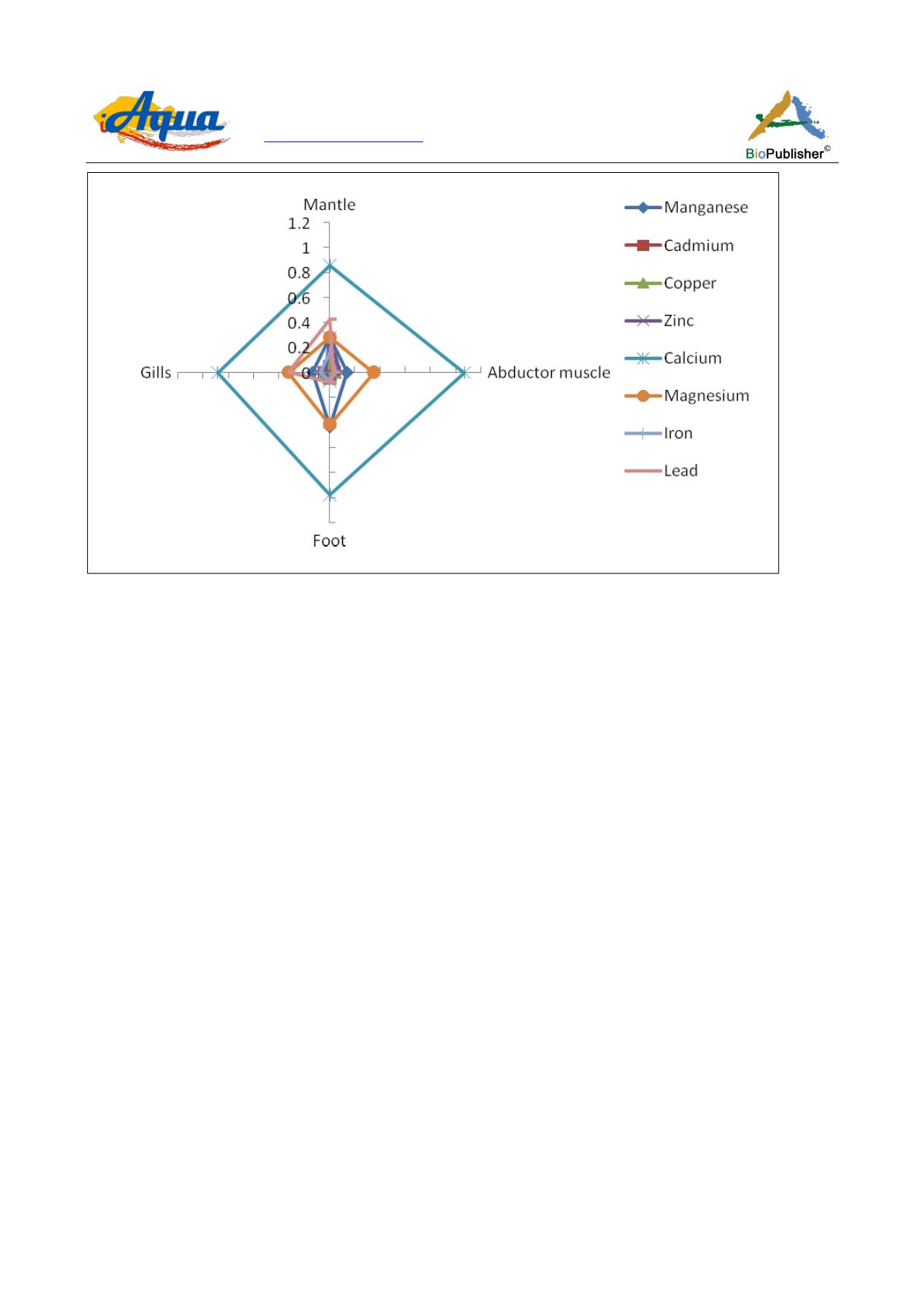
International Journal of Aquaculture, 2017, Vol.7, No.25, 166-173
171
Figure 5 A graph of metal elements concentration in the tissues
Malletia cumingii
obtained from the three sample stations of Okpon
River, Cross River State, Nigeria. Calcium was the most highly concentrated followed by Lead
4 Discussion
Magnesium and Calcium were higher in concentration than other elements in station A. All others were not
statistically different in concentration. Magnesium and Calcium are usually part of biological systems. These are
usually not grouped as heavy metals as their relative mass is not greater than five times the weight of water
(Glanze, 1996; Duruibe et al., 2007). Magnesium is known to regulate the functions of enzymes. It is co-factor of
enzymes that break down fat and glucose and functions in the production of proteins. Since it is important in the
formation of energy currency, ATP (Adenosine Triphosphate) it could be regarded as a source of fuel. Its role in
the proper functioning of sodium-potassium pump makes it important in maintenance of electrolyte balance in the
bodies of organisms (Byjus, 2015). Calcium is abundant in bones of organisms. Bivalves have no bones. Its
exoskeleton (the shell) is highly impregnated with calcium (Smith, 1986). Its high concentration was not a
surprise therefore because it is needed for further formation (growth) of the shell. Apart from shell formation, it is
important in muscle contraction and nervous coordination (Pleshchitser, 1958; Byjus, 2015). Oehlman and
Schulte-Oehlman (2003) pointed that molluscs are good indicators of metal availability as they are one group of
animals with metallothioneins, which are low-weight molecule protein swith high cysteine content and having
high affinity for absorbing trace elements.
Metals concentrations above normal concentrations constitute pollution. Apart from pollutants entering the water
systems through weathering (Idodo and Oronseye, 2006), anthropogenic sources are the reasons for entry of
pollutants into water (Ogbeibu and Ezeunara, 2002). For instance, the concentration of Lead, increased from
station A to C. Such increases could be attributed to increasing anthropogenic impact. For instance, Lead is a
component of fuel used in automobiles and light generators. The number of light generators and automobiles are
adding as one more from the upper reaches of the river to the lower reaches. If the Lead is not biodegraded or
removed by chemical reaction, or these processes do not remove it more than it is added, the concentration is
expected to increase downward as observed in Table 2. We may argue that it is because settlement increases and
adds downward from the upper part of the river downwards. It is not every pollutant or element that increases in
concentration down the river. Some elements could be released from a source and may be consumed by organics
or even chemical reactions as it moves down the river. Such was observed in Table 2 for Manganese. There may


